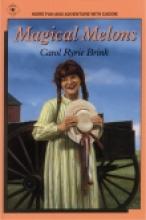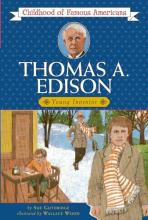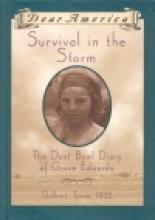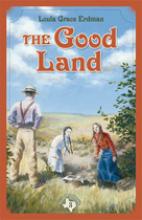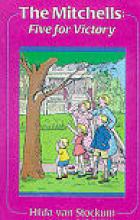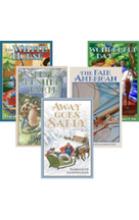United States History - Elementary
Magical Melons
This book would make a delightful read aloud for the whole family and should be required reading, along with Caddie Woodlawn, for those studying Wisconsin history
Thomas A. Edison: Young Inventor
This is a fascinating and often humorous story of one of the most renowned inventors of all time. As a boy, Edison was fascinated by the world around him and full of questions about everything. Although he had many mentors as a boy, his first grade teacher reacted so negatively to his natural curiosity that his mother took him out of school and taught him at home. His adventures involving chemistry, trains and printing newspapers make for enjoyable and interesting reading. Edison was clearly a boy of creativity and ingenuity and a positive role model for children of today in sharing Edison's scientific interests and natural curiosity. My six year old boy, in particular, was completely enthralled when we read this story aloud.
Copyrights 1947/1959. Several later printings.
Survival in the Storm
Survival in the Storm is the fictional story (in the format of a diary) of twelve-year old Grace Edwards who lives in Dalhart, Texas - a city near the center of the five-state area hardest hit by the infamous droughts and dust storms that plagued the Southwest for nearly a decade during the Great Depression.
The story provides a nice balance of family stability amidst hardships that give children today a fair look at the challenges of life in that time period. Grace volunteers at a hospital alongside her mother where the reader learns of the terrible illnesses associated with the dust storms. Families band together to help each other when hard times come and many leave for the "promised land" of California, only to be stuck in migrant camps where conditions are no better than at home. Throughout the story, virtues of perseverance and kindness are shown to be the things that "get people through" tough times.
The Good Land
The Panhandle Series is set in the 1890's..
The Mitchells: Five for Victory
Washington D.C. is an exciting place to grow up and the children are enchanted with pets, clubs and a mysterious girl who has just moved in down the street. Mother's attempts to take in boarders and a visit from Uncle Jim and "Mr. Jenkins" keep them busy while Father is away. Pets and babies are particularly memorable characters.
There is an aspect of the story that might be troubling for young children sensitive about adoption. A neighbor who considers adopting a war refugee decides not to because the child doesn't get along with the lady's son. The fate of adopted children is discussed rather carelessly by this lady (in terms of "well, my son has to come first") and the mother of the Mitchells doesn't have any good comebacks to resolve the issue. The story resolves nicely, however, as the girl ends up finding her grandfather, but this segment might need a little explanation. My sister-in-law (who has two adopted children) found the issue troubling and put the book aside until her children were older.
The Sally Series
Hope's Revolutionary War Diary
I like this book because it weaves interesting information about this period of time throughout the story, making it an educational read. Gregory not only portrays the drama and suspense of that period, but also accurately depicts the everyday occurrences and unusual habits in daily life. In the beginning, both Hope's father and brother are gone. When they return, she finds out the hardships they have gone through. Even though this is an educational book, it is easy to read and follows more than one interesting story line. In the beginning, for example, her brother has run away to join the army and no one knows how he is. She is also concerned about her father when he is gone. Will he return home? Then to make matters worse, her best friend is not allowed to talk to her, because her friend's family sympathizes with the other side. The family also has the unpleasant task of feeding and boarding some British soldiers. Will she accidentally reveal her sympathies?
The My America Series is shorter than the Dear Diary series also published by Scholastic.

